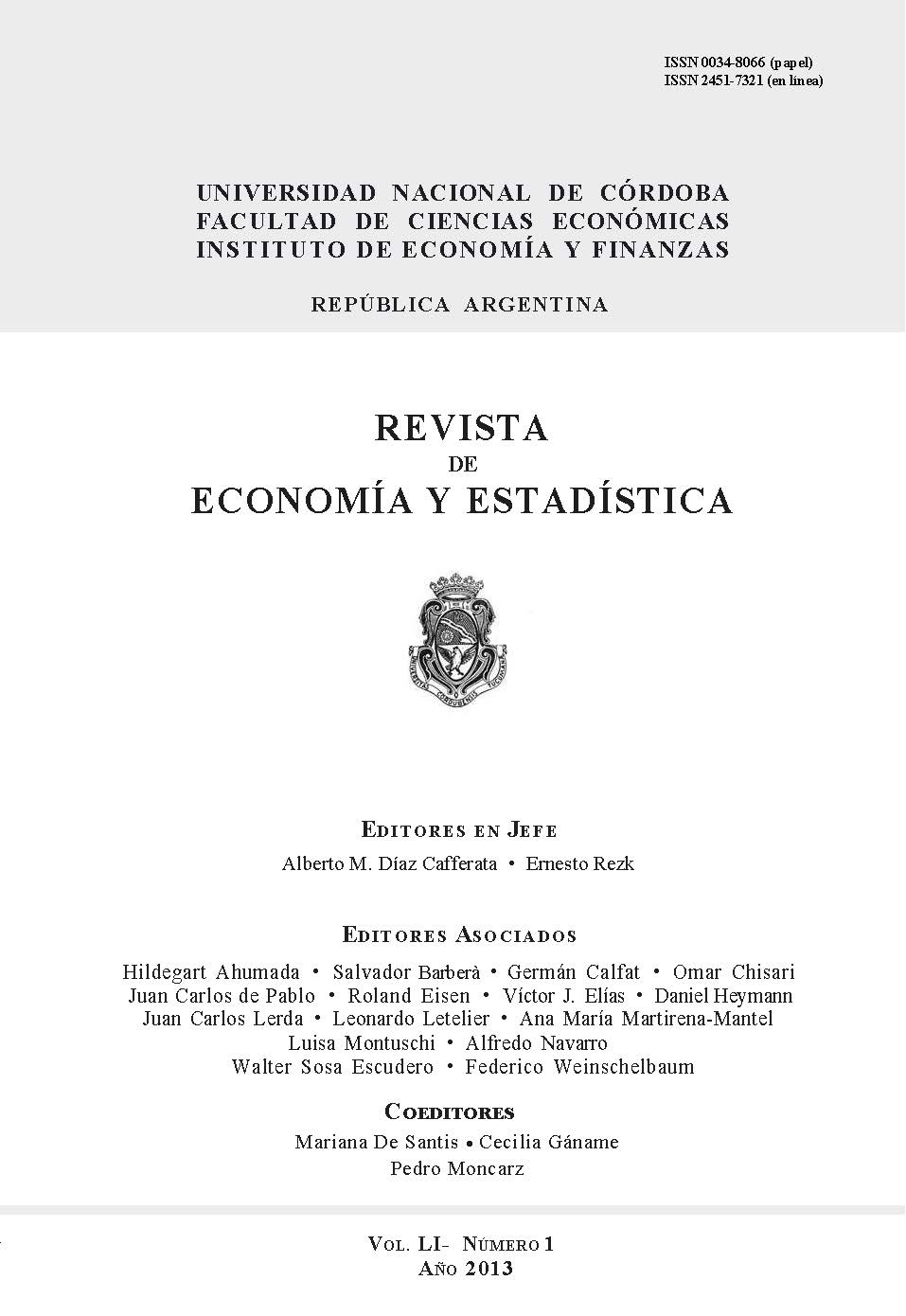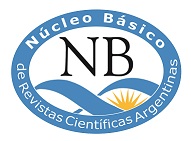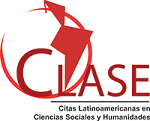Las tarifas endógenas en un modelo de agencia común: Un nuevo enfoque empírico aplicado a la India
DOI:
https://doi.org/10.55444/2451.7321.2013.v51.n1.11875Palabras clave:
India, economía política, protecciónResumen
En este trabajo se propone un nuevo método para testear el modelo de Grossman-Helpman sobre protección endógena y la formación de grupos de interés (lobbies), que no requiere de datos respecto a la formación de los grupos de interés o de sus contribuciones. Identifica a las industrias políticamente organizadas a partir de datos de producción y comercio que son de acceso común, así como las estimaciones de los parámetros estructurales del modelo. Aplicado a la India, produce resultados que son cualitativamente consistentes con las predicciones del modelo, y que parecen cuantitativamente más plausibles que las estimaciones para los EE.UU obtenidas por métodos alternativos. Nuestras estimaciones implican que la importancia que el gobierno de la India asigna a las contribuciones de los sectores políticamente organizados es una tercera parte de la importancia que le asigna al bienestar social (bruto), muy por encima de las estimaciones existentes para los Estados Unidos.
Descargas
Referencias
Baldwin, R. (1985). “The Changing Nature of US Trade Policy Since World War II”. In R. Baldwin and A. Krueger, eds., The Structure and Evolution of Recent US Trade Policy. University of Chicago Press for NBER.
Becker, G. (1983). “A Theory of Competition among Pressure Groups for Political Influence”. Quarterly Journal of Economics, 98(3), 371-400.
Bernheim, D. and Whinston M. (1986a). “Menu Auctions, resource allocation, and economic influence”. Quarterly Journal of Economics, 101(1), 1-31.
Bernheim, D. and Whinston M. (1986b). “Common agency”. Econometrica, 54(4), 923-942.
Cadot, O., de Melo, J., and Olarreaga M.(2003), “The protectionist bias of duty drawbacks: evidence from Mercosur", Journal of International Economics 59 (1), 161-182.
Cadot, O., de Melo, J., and Olarreaga M. (2004).“Lobbying, counterlobbying and the structure of tariff protection in poor and rich countries”. World Bank Economic Review, 18 (3), 1-22.
Damania, R., and Frederiksson P. (2007). “Trade Policy: What's Welfare Got to Do With It?”. Economic Letters, 96(1), 64-69.
Gawande, K., and Bandyopadhyay, S. (2000). “Is protection for sale? A test of the Grossman-Helpman Theory of Endogenous Protection”. Review of Economics and Statistics, 82(1), 139-152.
Gawande, K., and Krishna, P. (2005). “Lobbying Competition Over US Trade Policy”. NBER Working Paper 11371.
Gawande, K., and Krishna, P. (2003). “The political economy of trade policy: empirical approaches”. In J. Harrigan, ed., Handbook of International Trade, New York: Basil Blackwell.
Gawande, K., Sanguinetti P., and Bohara, A. (2004). “Trade diversion and declining tariffs: evidence from Mercosur”. Journal of International Economics 64(1), 65-88.
Goldberg, P., and Maggi G. (1999). “Protection for Sale: an Empirical Investigation”. American Economic Review, 89(5), 1135-1155.
Goldfeld, S., and Quandt R. (1973). “The estimation of structural shifts by switching
regressions”. Annals of Economic and Social Measurement, 2(4), 475{485.
Grossman, G., and Helpman E. (1994). “Protection for sale”. American Economic Review, 84(4), 833-850.
Hotchkiss, J. (1991). “The Denition of Part-Time Employment: A Switching Regression Model with Unknown Sample Selection”. International Economic Review 32(4), 899-917.
Kee, H. L., Nicita A. and Olarreaga M. (2009). “Estimating trade restrictiveness”. Economic Journal, 119 (534), 172-199.
Kee, H. L., Nicita A. and Olarreaga M. (2008). “Import demand elasticities and trade distorsions”. Review of Economics and Statistics, 90(4), 666-682.
Lee, J.W., and Swagel P. (1997).“Trade Barriers and Trade Flows Across Countries and Industries”. Review of Economics and Statistics, 79(3), 372-382.
Maddala, G. S. (1983). Limited-Dependent and Qualitative Variables in Econometrics. Cambridge, Econometric Series Monograph.
Marvel, H., and Ray, E. (1983). “The Kennedy Round: Evidence on the Regulation of International Trade in the United States”. American Economic Review, 73(1), 190-197.
McCalman, P. (2004). "Protection for Sale and Trade Liberalization: an Empirical Investigation". Review of International Economics, 12(1), 81-94.
McLachlan, G., and Krishnan T. (1997). The EM Algorithm and Extensions, Wiley.
Mitra, D. (1999). "Endogenous Lobby Formation and Endogenous protection: A Long-Run Model of Trade Policy Determination"; American Economic Review, 89 (5), 1116-1134.
Mitra, D., Thomakos D., and Ulubasoglu M. (2002). Protection for sale in a developing country: democracy versus dictatorship". Review of Economics and Statistics, 84 (3), 497-508.
Mitra, D., Thomakos D., and Ulubasoglu M. (2002). “Can We Obtain Realistic Parameter Estimates for the ‘Protection for Sale' Model?”. Canadian Journal of Economics 39(1), 187-210.
Panagariya, A. (1999). “The WTO Trade Policy Review of India, 1998”. World Economy, 22(6), 799-824.
Peltzman, S. (1976). “Toward a More General Theory of Regulation”. Journal of Law and Economics, 19(2), 211-240.
Pursell, G. (1996). “Indian trade policies since the 1991/1992 reform”. Mimeo. The World Bank.
Ray, E. J. (1981). “The Determinants of Tariff and Nontariff Trade Restrictions in the United States". Journal of Political Economy, 89(1), 105-121.
Rodrik, D. (1995). “Political economy of trade policy”. In G. Grossman and K. Rogoff, eds., Handbook of International Economics, vol. III, North Holland.
Smith, R. J., and Blundell R. (1986). “An Exogeneity Test for a Simultaneous Equation Tobit Model with an Application to Labor Supply”. Econometrica, 54(3), 679-686.
Stigler, G. (1971). “The Theory of Economic Regulation”. Bell Journal of Economic Management and Science, 2(1), 3-21.
Srinivasan, T.N. (2001). “India's reform of external sector policies and future multilateral trade negotiations”. Economic Growth Center discussion paper # 830, Yale University.
Trefler, D. (1993). “Trade Liberalization and the Theory of Endogenous Protection: An Econometric Study of US Import Policy”. Journal of Political Economy 101(1), 138-160.
WTO (1998).“Trade Policy Review of India, 1998”. World Trade Organization, Geneva.
Descargas
Publicado
Número
Sección
Licencia
Derechos de autor 2013 Olivier Cadot, Laure Dutoit, Jean-Marie Grether, Marcelo Olarreaga

Esta obra está bajo una licencia internacional Creative Commons Atribución-NoComercial-SinDerivadas 4.0.
Aquellos autores/as que tengan publicaciones con esta revista, aceptan los términos siguientes:
Los autores/as conservarán sus derechos de autor y garantizarán a la revista el derecho de primera publicación de su obra, el cuál estará simultáneamente sujeto a la Licencia Creative Commons Atribución-NoComercial-SinDerivar 4.0 Internacional que permite a terceros compartir la obra siempre que se indique su autor y su primera publicación esta revista.
Los autores/as podrán adoptar otros acuerdos de licencia no exclusiva de distribución de la versión de la obra publicada (p. ej.: depositarla en un archivo telemático institucional o publicarla en un volumen monográfico) siempre que se indique la publicación inicial en esta revista.
Se permite y recomienda a los autores/as difundir su obra a través de Internet (p. ej.: en archivos telemáticos institucionales o en su página web) antes y durante el proceso de envío, lo cual puede producir intercambios interesantes y aumentar las citas de la obra publicada. (Véase El efecto del acceso abierto)














